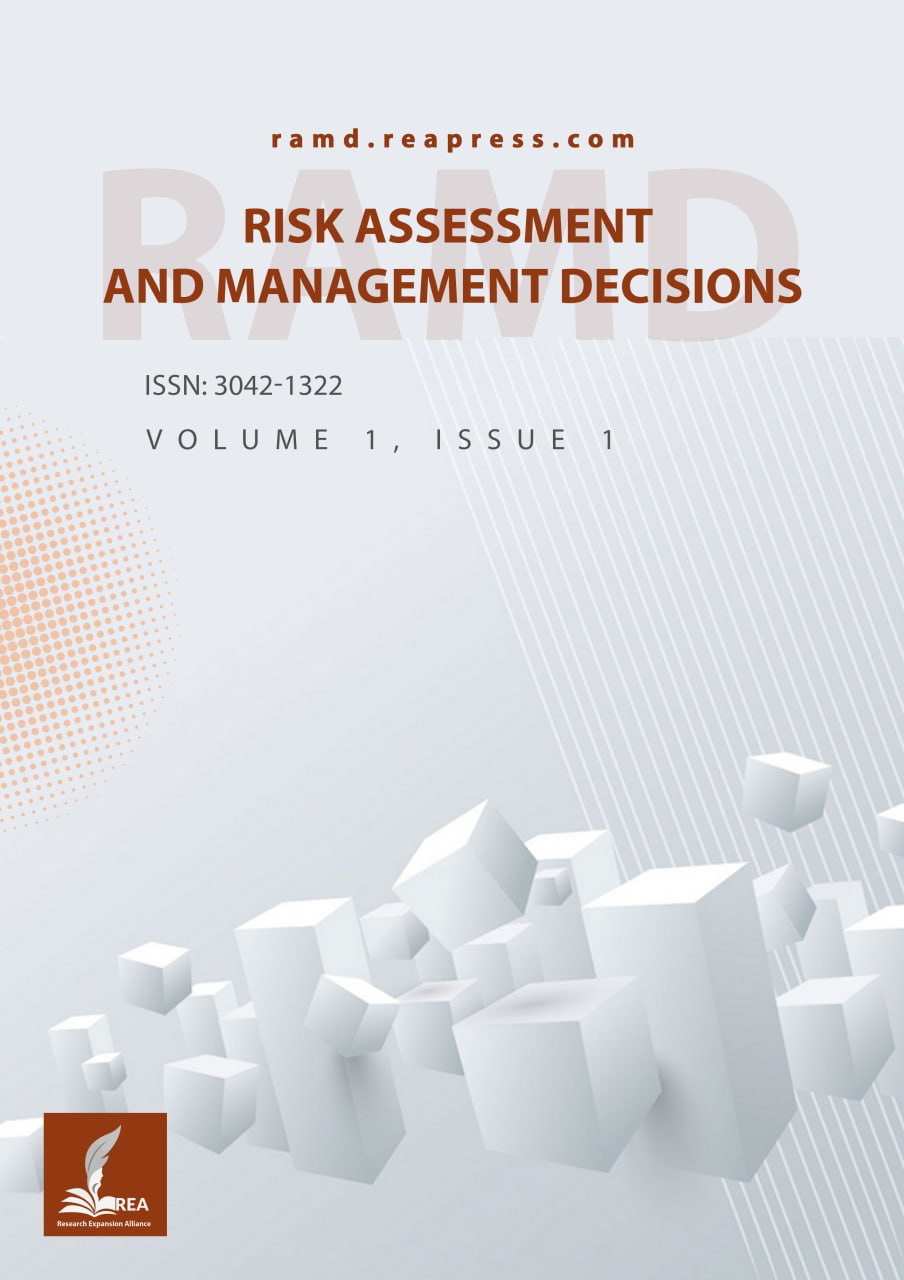A Review of Welding and Fabrication Processes and Resulting Impacts on Environmental Sustainability: Risk and Control Measures
Abstract
The application of welding and fabrication processes are common metal-metal joining techniques widely adopted in industries such as construction, manufacturing, and automotive, but they also pose some level of hazard to the environment depending on the specific method. Despite the growing awareness of environmental issues, the impact of welding and fabrication processes on pollution remains a major concern. There is a need for effective control strategies to curtail emissions while protecting the environment from the resulting impacts of these processes. This study is based on a review of existing literature on the environmental impact of welding and fabrication processes. The literature review included studies on the emission of pollutants from welding operations, the effects of these pollutants on the environment and human health, and the current practices for controlling emissions. In addition, the methodology also involved an overview of the effects of welding particulate and gaseous substances on human health and environmental sustainability, risk assessment procedures, safety precautions and preventive methods to provide a comprehensive overview of the problem. The findings were based on the synthesis of the information obtained from the aforementioned methodology. The results indicated that welding and fabrication processes are significant sources of air and water pollution. These processes release a number of pollutants, including nitrogen oxides, sulfur dioxide, carbon monoxide, particulate matter, Volatile Organic Compounds (VOCs) and Hazardous Air Pollutants (HAPs), which can have harmful effects on the environment and human health. In addition, the use of certain materials in welding operations, such as lead, chromium, and cadmium, can result in the release of toxic substances that pose a risk to workers and nearby communities. From the findings, it is essential to implement sustainable practices to reduce emissions and protect the environment from the adverse effects of these processes. This can be achieved through the use of advanced technologies, such as emission control devices and cleaner fuels, as well as proper waste management practices to minimize the release of pollutants into the environment. Regulatory measures are also necessary to ensure compliance with environmental standards and promote responsible practices in the industry.
Keywords:
Environmental sustainability, Atmospheric contamination, Volatile compounds, Welding and fabricationReferences
- [1] Ekanem, I., Bassey, M., & Ikpe, A. (2024). Dynamics of friction stir welding as a conventional metal joining technique in manufacturing industries. Research annals of industrial and systems engineering, 1(1), 1–14.
- [2] Cheriyan, D., & Choi, J. ho. (2020). A review of research on particulate matter pollution in the construction industry. Journal of cleaner production, 254, 120077. DOI:10.1016/j.jclepro.2020.120077
- [3] Mathew, N., Tirpude, A., Pillai, A. M., Mondal, P., & Arfin, T. (2023). Emerging contaminants in air pollution and their sources, consequences, and future challenges. In Bioremediation technologies: for wastewater and sustainable circular bioeconomy (pp. 235–274). DOI: 10.1515/9783111016825-014
- [4] Celebi, U. B., & Vardar, N. (2008). Investigation of VOC emissions from indoor and outdoor painting processes in shipyards. Atmospheric environment, 42(22), 5685–5695. DOI:10.1016/j.atmosenv.2008.03.003
- [5] Golbabaei, F., & Khadem, M. (2015). Air pollution in welding processes — assessment and control methods. Current air quality issues, 10, 59793. DOI:10.5772/59793
- [6] Mishra, S., Bharagava, R. N., More, N., Yadav, A., Zainith, S., Mani, S., & Chowdhary, P. (2019). Heavy metal contamination: an alarming threat to environment and human health. In Environmental biotechnology: For sustainable future (pp. 103–125). Springer. DOI: 10.1007/978-981-10-7284-0_5
- [7] Maduna, K., & Tomašić, V. (2017). Air pollution engineering. Physical sciences reviews, 2(12), 20160122. https://doi.org/10.1515/psr-2016-0122
- [8] Singh, N., Poonia, T., Siwal, S. S., Srivastav, A. L., Sharma, H. K., & Mittal, S. K. (2022). Challenges of water contamination in urban areas. In Current directions in water scarcity research (Vol. 6, pp. 173–202). Elsevier. DOI: 10.1016/b978-0-323-91838-1.00008-7
- [9] Rawat, S., Verma, L., & Singh, J. (2019). Environmental hazards and management of E-waste. In Environmental concerns and sustainable development: volume 2: Biodiversity, soil and waste management (pp. 381–398). Springer. DOI: 10.1007/978-981-13-6358-0_16
- [10] di Filippo, R., Bursi, O. S., & di Maggio, R. (2022). Global warming and ozone depletion potentials caused by emissions from HFC and CFC banks due structural damage. Energy and buildings, 273, 112385. DOI:10.1016/j.enbuild.2022.112385
- [11] Doncheva, E., Avramov, N., Krstevska, A., Petreski, M., Djokikj, J., & Djidrov, M. (2024). Sustainability and environmental life cycle analysis of welding processes. International journal of structural integrity. DOI:10.1108/IJSI-02-2024-0024
- [12] Cole, H., Epstein, S., & Peace, J. (2007). Particulate and gaseous emissions when welding aluminum alloys. Journal of occupational and environmental hygiene, 4(9), 678–687. DOI:10.1080/15459620701516162
- [13] Ekanem, I. I., Ohwoekevwo, J. U., Achebo, J. I., & Obahiagbon, K. O. (2023). Back propagation neutral network based modelling and optimization of thermal conductivity of mild steel welds Agglutinated by Tungsten Inert Gas welding technique. Journal of materials engineering, structures and computation, 2(3). https://doi.org/10.5281/zenodo.8310192
- [14] Ekefre A, Ekanem II, & Ikpe AE. (2024). Physical survey on the health hazards of welding activities on welding operators in Uyo, Nigeria. Ibom medical journal, 17(2), 302–312. DOI:10.61386/imj.v7i2.441
- [15] Gaffney, J. S., & Marley, N. A. (2009). The impacts of combustion emissions on air quality and climate - From coal to biofuels and beyond. Atmospheric environment, 43(1), 23–36. DOI:10.1016/j.atmosenv.2008.09.016
- [16] Huang, Z., Cao, H., Zeng, D., Ge, W., & Duan, C. (2021). A carbon efficiency approach for laser welding environmental performance assessment and the process parameters decision-making. International journal of advanced manufacturing technology, 114(7–8), 2433–2446. DOI:10.1007/s00170-021-07011-8
- [17] Chen, R., Yin, H., Cole, I. S., Shen, S., Zhou, X., Wang, Y., & Tang, S. (2020). Exposure, assessment and health hazards of particulate matter in metal additive manufacturing: a review. Chemosphere, 259, 127452. DOI:10.1016/j.chemosphere.2020.127452
- [18] Subedi, S., Jeng, A., & Bush, D. (2019). Metal fumes from welding processes and health impact. Virginia journal of public health, 3(1), 4. https://commons.lib.jmu.edu/vjph/vol3/iss1/4/
- [19] Koh, D. H., Kim, J. I., Kim, K. H., & Yoo, S. W. (2015). Welding fume exposure and chronic obstructive pulmonary disease in welders. Occupational medicine, 65(1), 72–77. DOI:10.1093/occmed/kqu136
- [20] Lai, C. H., Ho, S. C., Pan, C. H., Chen, W. L., Wang, C. C., Liang, C. W., … & Chuang, H. C. (2021). Chronic exposure to metal fume PM2.5 on inflammation and stress hormone cortisol in shipyard workers: a repeat measurement study. Ecotoxicology and environmental safety, 215, 112144. DOI:10.1016/j.ecoenv.2021.112144
- [21] Murugan, S. S., & Sathiya, P. (2024). Analysis of welding hazards from an occupational safety perspective. Vietnam journal of science, technology and engineering, 66(3), 63–74.
- [22] Riccelli, M. G., Goldoni, M., Poli, D., Mozzoni, P., Cavallo, D., & Corradi, M. (2020). Welding fumes, a risk factor for lung diseases. International journal of environmental research and public health, 17(7), 2552. DOI:10.3390/ijerph17072552
- [23] Rizkya, I., Syahputri, K., Sari, R. M., & Siregar, I. (2019). 5S implementation in welding workshop-a lean tool in waste minimization. IOP conference series: materials science and engineering (Vol. 505, p. 12018). IOP Publishing. DOI: 10.1088/1757-899X/505/1/012018
- [24] Flynn, M. R., & Susi, P. (2012). Local exhaust ventilation for the control of welding fumes in the construction industry—a literature review. Annals of occupational hygiene, 56(7), 764–776. DOI:10.1093/annhyg/mes018
- [25] Bartkowiak, G., Baszczyński, K., Bogdan, A., Brochocka, A., Dabrowska, A., Hrynyk, R., … & Zera, J. (2021). Use of personal protective equipment. In Handbook of human factors and ergonomics (pp. 668–684). Wiley Online Library. DOI: 10.1002/9781119636113.ch25
- [26] Hedberg, Y. S., Wei, Z., McCarrick, S., Romanovski, V., Theodore, J., Westin, E. M., … & Odnevall Wallinder, I. (2021). Welding fume nanoparticles from solid and flux-cored wires: solubility, toxicity, and role of fluorides. Journal of hazardous materials, 413, 125273. DOI:10.1016/j.jhazmat.2021.125273
- [27] Cezar-Vaz, M. R., Bonow, C. A., & Vaz, J. C. (2015). Risk communication concerning welding fumes for the primary preventive care of welding apprentices in southern Brazil. International journal of environmental research and public health, 12(1), 986–1002. DOI:10.3390/ijerph120100986
- [28] Manickam, B., Nandhakumar, D. K., Rathinam, J. S., Sujatha, C. R., Srinivasan, S. H., & Sathish, P. (2024). Review for a comprehensive examination of the detrimental effects caused by welding fumes on human well-being and the ongoing risks to public health. Pollution, 10(4), 1140–1161. DOI:10.22059/poll.2024.374203.2299
- [29] Hill, R. H. (2019). Recognizing and understanding hazards — the key first step to safety. Journal of chemical health and safety, 26(3), 5–10. DOI:10.1016/j.jchas.2018.11.005
- [30] Purohit, D. P., Siddiqui, N. A., Nandan, A., & Yadav, B. P. (2018). Hazard identification and risk assessment in construction industry. International journal of applied engineering research, 13(10), 7639–7667.
- [31] Oksel, C., Subramanian, V., Semenzin, E., Ma, C. Y., Hristozov, D., Wang, X. Z., … & Wilkins, T. (2016). Evaluation of existing control measures in reducing health and safety risks of engineered nanomaterials. Environmental science: Nano, 3(4), 869–882. DOI:10.1039/c6en00122j
- [32] Aven, T. (2016). Risk assessment and risk management: Review of recent advances on their foundation. European journal of operational research, 253(1), 1–13. DOI:10.1016/j.ejor.2015.12.023
- [33] Selman, J., Spickett, J., Jansz, J., & Mullins, B. (2019). Confined space rescue: a proposed procedure to reduce the risks. Safety science, 113, 78–90. DOI:10.1016/j.ssci.2018.11.017
- [34] Balkhyour, M. A., Ahmad, I., & Rehan, M. (2019). Assessment of personal protective equipment use and occupational exposures in small industries in Jeddah: Health implications for workers. Saudi journal of biological sciences, 26(4), 653–659. DOI:10.1016/j.sjbs.2018.06.011
- [35] Matusiak, J., & Gliński, M. (2012). Methods of eliminating pollutant emissions from the work environment in welding and related processes. Welding international, 26(11), 852–861. DOI:10.1080/09507116.2011.606130


